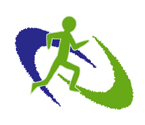
| Home | Contact Us | Links |
Specialty Techniques Provided at MMTCThe following specialty techniques are provided by various practitioners at the Metcalfe Massage Therapy Clinic:
Active Release Techniques® (ART)The Active Release Techniques Soft-Tissue Management System, also known as ART®, is a highly successful approach to injuries of soft tissue designed in 1985 by P. Michael Leahy, DC, CCSP. Adhesions (scar tissue) may develop from injury or repetitive strain. These adhesions may result in poor circulation, neurological symptoms (e.g. tingling/numbness/pain), tension, weakness, and/or reduced flexibility. ART is used to free up these adhesions, allowing the tissue to return to its normal function. This technique has proven to be very successful for athletic injury rehabilitation as well as dealing with neurological conditions such as sciatica and Carpal Tunnel Syndrome (CTS). Sports MassageSports Massage is designed to support and prepare the body for the conditioning ahead. The aims are to flush from the athlete's body the causes of muscular fatigue, spasm and soreness (e.g. fascial restrictions, trigger points) that can potentially lead to injury. The athlete returns to training able to work at maximum capacity. Sports massage can be incorporated at various stages of the athlete's program. Pregnancy MassageDuring pregnancy, a woman's body undergoes tremendous changes for the body to adjust in a relatively brief period of time. Pregnancy massage aims to lessen any musculoskeletal pain that the mother is experiencing, as well as promote a healthy pregnancy by inducing relaxation. The massage can focus on any area that is in discomfort, such as lower back pain or sciatica (leg and hip pain). The goals of the massage can be to decrease muscle tension, spasm, or swelling or simply to promote relaxation. At home pregnancy-specific stretches and hydrotherapy suggestions are given to the mother to prolong the beneficial results of the massage. Myofascial Release (MFR)MRF is a highly successful and popular technique, especially with people noticing any restrictions in their muscle's ability to stretch and strengthen. 'Myo' meaning muscle and 'fascia', a connective tissue overlaying the muscles, tend to stick together which causes postural tension and stiffness, muscle pain, and reduced muscle strength. Myofascial restrictions develop in the body as a result of poor posture, dehydration, stress, trauma or injury causing scarring. This technique slowly yet effectively releases adhesions between the muscle and fascia by using firm pressure and no lotion. The result is reduced pain and tension and an increase in the muscles' capacity to stretch and strengthen. Craniosacral Therapy (CST)Craniosacral Therapy (CST) is a non-invasive approach to treat the craniosacral system. This system consists of membranes and cerebral spinal fluid, which protect the brain and spinal cord. Using 5 grams of pressure on the sutures of the cranium and other protocols, CST helps free up lesions and allows the body's natural healing mechanism to decrease stresses that dysfunction puts upon the Central Nervous System. This treatment is used for various conditions such as; Migraine Headaches, Scoliosis, Chronic Fatigue Syndrome and TMJ just to name a few. Unlike massage, the client remains fully clothed and is lying on their back during the entire treatment. This modality can also be combined with massage with the CST treatment occurring in the second half when the client is lying supine and fully draped. Manual Lymph DrainageFluids released from the blood vessels into the body's tissues are gathered up and carried back again to the blood by the lymphatic system. As this is a passive system there can be times of fluid build-up when the body experiences swelling in an area that is not clearing itself of lymph fluid. Specific massage techniques, using far less pressure than in usual Swedish massage, move lymph by mechanically pumping the lymphatic fluid through the lymphatic capillaries. This is used to reduce swelling and ease the pain caused by it, lower the chance of scar tissue formation and remove metabolic wastes produced by swelling and inflammation. Swedish MassageFor thousands of years, people have used massage as a reliable and effective therapy. Only in the past few hundred years, however have these massage techniques been defined and expanded upon and given the generic term Swedish massage. A Swedish massage incorporates all the basic techniques required to promote good muscle health. Additional special techniques may be added to the Swedish massage treatment, but the traditional Swedish massage alone will always include a variety of soothing effleurage strokes and kneading-like petrissage manipulations. Your Swedish massage may also include the use of heat or cold hydrotherapy with therapist assisted stretches and take-home remedial exercises to achieve the goals of your treatment. Trigger Point TherapyA trigger point is a hyperirritable area usually found in a band of tight muscle or fascia, commonly felt as a "knot". These points can be tender when touched and may refer pain to predictable areas elsewhere in the body. A trigger point may also affect the strength and length of a muscle, limiting your flexibility. Trigger Point Therapy reduces the pain of the point (and any referring pain) and diminishes the "knot". As tension headaches are often the result of trigger points in the shoulder and neck, trigger point therapy is also a highly effective technique to eliminate and prevent headaches. Palliative CareAs people become seriously ill and bedridden, their contact with the outside world is greatly diminished. At this stage, one has to come to grips not only with a fatal illness, but often a sense of isolation, and the difficult emotional process of grieving that follows. Possibly one of the most profound effects of massage therapy is its ability to lessen stress, pain, isolation and anxiety, and to enhance one’s psycho-emotional health by offering a caring, safe and compassionate touch. |


